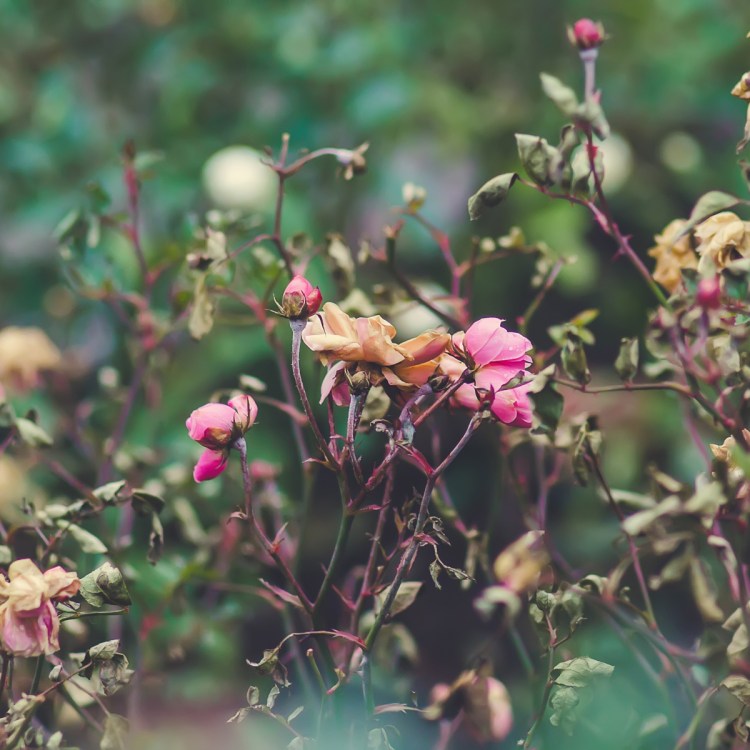Gardeners often ask how much they should cut back their plants in the fall. There seems to be a lot of confusion – which is understandable, because there isn’t a single correct answer.
The answer depends on what kind of plants are being discussed, what the purpose of the garden is and what the person who manages and/or owns the garden wants.
Let’s get the simple stuff over with first: Autumn is the worst time to prune trees and shrubs. For the health of the plant, the best time for pruning is in late winter or early spring, when the trees are dormant and the deciduous varieties have no leaves.
The health of the plant is not always the prime concern, however. Gardeners like flowers, and with shrubs that bloom in spring if the pruning is done in March a lot of flower buds will be cut off, along with the undesirable branches.
Pruning of forsythia, lilacs and other early bloomers is often done right after the plants bloom, giving the next year’s flowers plenty of time to develop.
Some fall pruning is allowed, even recommended.
Any dead branches should be cut out as soon as you notice them. Cutting those won’t hurt the tree or shrub at all.
Also prune for safety. If branches are touching a house or other buildings, they should be cut down before the winter winds blow, which could create damage both to the house and the tree.
Foundation plantings located where snow and ice could fall off a roof and damage the branches should be cut back. Some people cover such shrubs with wooden teepees or similar devices, but I think they are ugly and couldn’t live with them – which is why we have gutters, downspouts and energy-efficient insulation.
Perennials are easier, because there are no wrong choices, and harder, because people have to make a decision based on what they prefer.
I’ll start with the two extreme positions from two respected horticulturists in charge of popular Maine gardens.
James McCain is executive director of the Fort Williams Park Foundation, in charge of the Park Ecology Project that is removing invasive plants from the park and replacing them – either by planting or encouraging existing specimens – with natives.
McCain tells his volunteers to leave everything standing until mid-April.
“Besides the interesting aesthetics in leaving the seed pods and skeletal remains of the plants standing through fall and early winter, it also allows more time for the birds to eat the seeds in fall and winter,” he said. “And many pollinators overwinter in the leaf litter and standing dead twigs/ stems, which also provide good cover and protection for wildlife, and early nesting birds will also enjoy the extra material for creating their nests.”
In addition, he said, some of the seeds from the spent blossoms will sprout, creating more desirable plants and fewer weeds.
An alternative view comes from Bill Cullina, president and chief executive officer of Coastal Maine Botanical Gardens in Boothbay. He and his staff cut all perennials down, because leaving them up “is like putting up a vacancy sign for voles.”
The opposing philosophies stem partly from the fact that the botanical garden and Fort Williams gardens have different purposes. The botanical garden wants to wow visitors with beauty, great shows of color and striking design. There is an educational component, and the garden includes many native plants, but the plants have to put on a show only from April to November, at which point the lights of Gardens Aglow take over for a few months. The garden is mostly closed in the depths of winter.
At Fort Williams, the goal is to create self-sustaining gardens that keep out invasive plants and support wildlife.
To reiterate, before doing anything gardeners must decide what their goal is.
My wife Nancy and I spend most of our winters at our home, and we want some interest in our gardens during that season. With perennials, if it stands above the snow throughout the winter, we leave it standing. If the leaves flop, we cut and remove it.
The ones we leave up include ornamental grasses, tall sedums such as Autumn Joy, echinacea, lavender and similar plants. We like to see them blowing in the wind and covered with snow and ice.
If it flops or is prone to mildew we cut them down. Those plants include daylilies, peonies, bearded iris, bee balm, Solomon’s seal and more.
If in doubt, we cut back the foliage – for two reasons. First, we are busier in the spring so it is good to get work done in the fall.
Second, plants left standing trap oak leaves. We get enough of those, already. At times I wish we had a completely flat yard so all those leaves would blow into the neighbors’ yards.
ABOUT THE WRITER
TOM ATWELL is a freelance writer gardening in Cape Elizabeth. He can be contacted at: tomatwell@me.com.
Send questions/comments to the editors.



Success. Please wait for the page to reload. If the page does not reload within 5 seconds, please refresh the page.
Enter your email and password to access comments.
Hi, to comment on stories you must . This profile is in addition to your subscription and website login.
Already have a commenting profile? .
Invalid username/password.
Please check your email to confirm and complete your registration.
Only subscribers are eligible to post comments. Please subscribe or login first for digital access. Here’s why.
Use the form below to reset your password. When you've submitted your account email, we will send an email with a reset code.